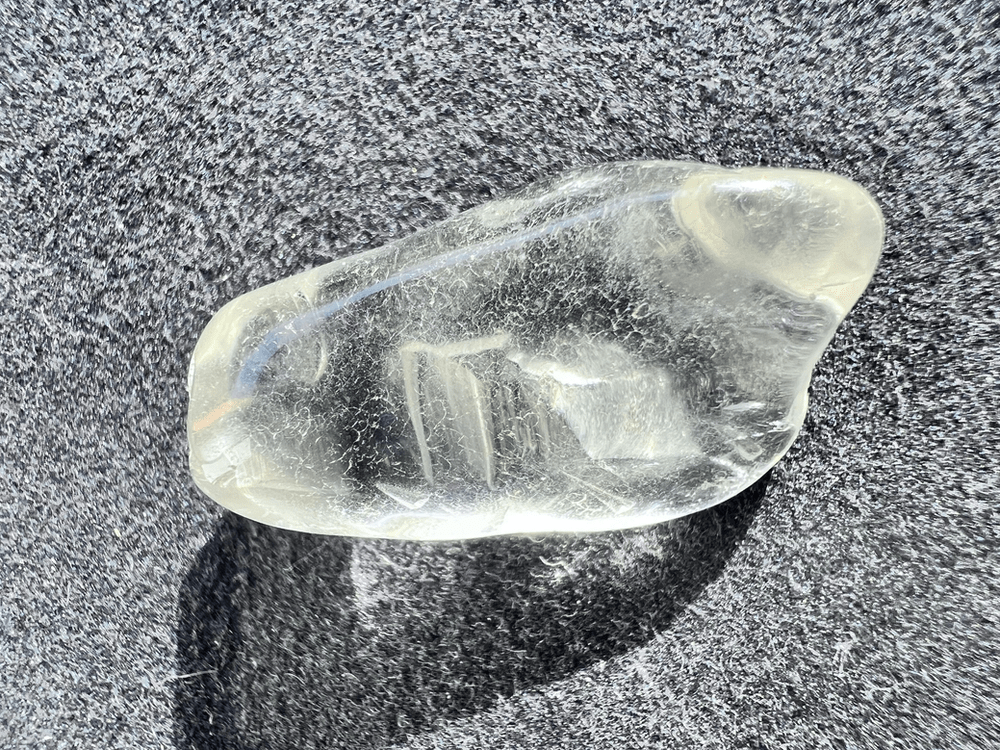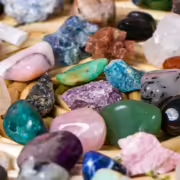Prasiolite: Properties, uses and benefits
Prasiolite: A Little-Known Quartz
Prasiolite, also mistakenly known as green amethyst, is a captivating gemstone that has dazzled the world with its bewitching shades of green and its spiritual significance. Thanks to its association with transformation and spirituality, prasiolite has won the admiration of gem lovers and seekers of higher consciousness.
Embark on a journey to explore the geological origins, historical relevance and metaphysical properties of this exquisite green stone.

- Geological formation of Prasiolite
- Rough Prasiolite – Raw Beauty Revealed
- Sources – The Worldwide Scope of Prasiolite
- Historical significance of Prasiolite – Through the ages
- Metaphysical Properties of Prasiolite – Illuminating energies
- Varieties of Prasiolite
- Colors of Prasiolite
- Durability and Wearability of Prasiolite
- Prasiolite Improvements – Preserving natural beauty
- Synthetic Prasiolite – Nature in the Laboratory
- Imitations of Prasiolite – Discerning the Authentic
- Prasiolite Care – Preserving natural beauty
Geological formation of Prasiolite
Prasiolite, a variety of monocrystalline quartz, emerges from the same conditions. Its striking green color is the result of the heat treatment applied by man to amethyst, causing a transformation of the color as this stone is very rare in nature and only low-quality stones are produced.
This process is what gives prasiolite its nickname of “green amethyst”, although this term is not accepted as there is no such thing as green in natural amethysts.
Rough Prasiolite – Raw Beauty Revealed
Uncut prasiolite crystals display a raw, captivating beauty. Their natural formations, often characterised by hexagonal prisms, reveal the transformational journey of stone within the Earth. Each raw prasiolite crystal carries a unique story, reflecting the geological forces that shape our planet.
Sources – The Worldwide Scope of Prasiolite
Prasiolite can be found in very small quantities and quality in Brazil. Most prasiolites on the market are heated amethysts and come from all sources of amethyst.
Historical significance of Prasiolite – Through the ages
The historical significance of prasiolite may not be as extensive as that of certain precious stones, given its relatively recent emergence through heat treatment. However, its captivating shades of green have been associated with growth, renewal and spiritual transformation.
As prasiolite gains recognition, its symbolism continues to evolve, resonating with people seeking inner growth and a deeper connection with spirituality.
Metaphysical Properties of Prasiolite – Illuminating energies
Prasiolite is considered a stone of spiritual growth and transformation. Its vibrant green colour is associated with the heart chakra, promoting emotional balance, compassion and harmony. Prasiolite’s energy is said to support meditation, helping individuals to connect with their higher self and tap into their inner wisdom.
Varieties of Prasiolite
Prasiolite has a small range of colours, but no varieties to speak of.
Colors of Prasiolite
Prasiolite enchants with its striking shades of green, from delicate pastels to deep, rich greens. The stone’s color spectrum captures the essence of nature’s renewal and growth, resonating with those who seek to embrace transformative energies.
Durability and Wearability of Prasiolite
Prasiolite’s durability, with a hardness of 7 on the Mohs scale, makes it suitable for a variety of jewellery styles. Its robust nature ensures that prasiolite jewellery can withstand daily wear while retaining its lasting brilliance.
Prasiolite Improvements – Preserving natural beauty
The most common improvement to prasiolite involves heat treatment applied to the amethyst to obtain its captivating green colour. This process highlights the stone’s ability to undergo transformation and take on a new identity while retaining its natural properties. It is interesting to note that most heated amethysts tend to become citrine and not prasiolite.
Synthetic Prasiolite – Nature in the Laboratory
Synthetic prasiolite is available on the market. These artificial gems reproduce the color of natural prasiolite by heat-treating synthetic amethysts.
Imitations of Prasiolite – Discerning the Authentic
When looking for genuine prasiolite, which usually means natural heated amethyst, it is essential to be aware of imitations that may attempt to reproduce its vibrant shades of green. Some imitations may include tinted quartz or glass. To ensure authenticity, buy prasiolite from reputable and competent gem dealers.
Prasiolite Care – Preserving natural beauty
To preserve the timeless beauty of prasiolite, handle it with care. Avoid exposure to aggressive chemicals and store it separately from other gems to avoid scratches.
Gently clean prasiolite jewellery with mild soapy water and a soft brush, ensuring that its seductive energy remains intact.


